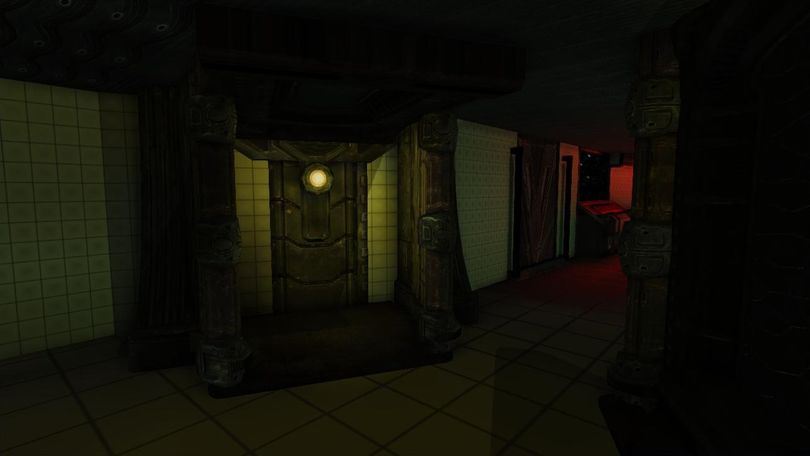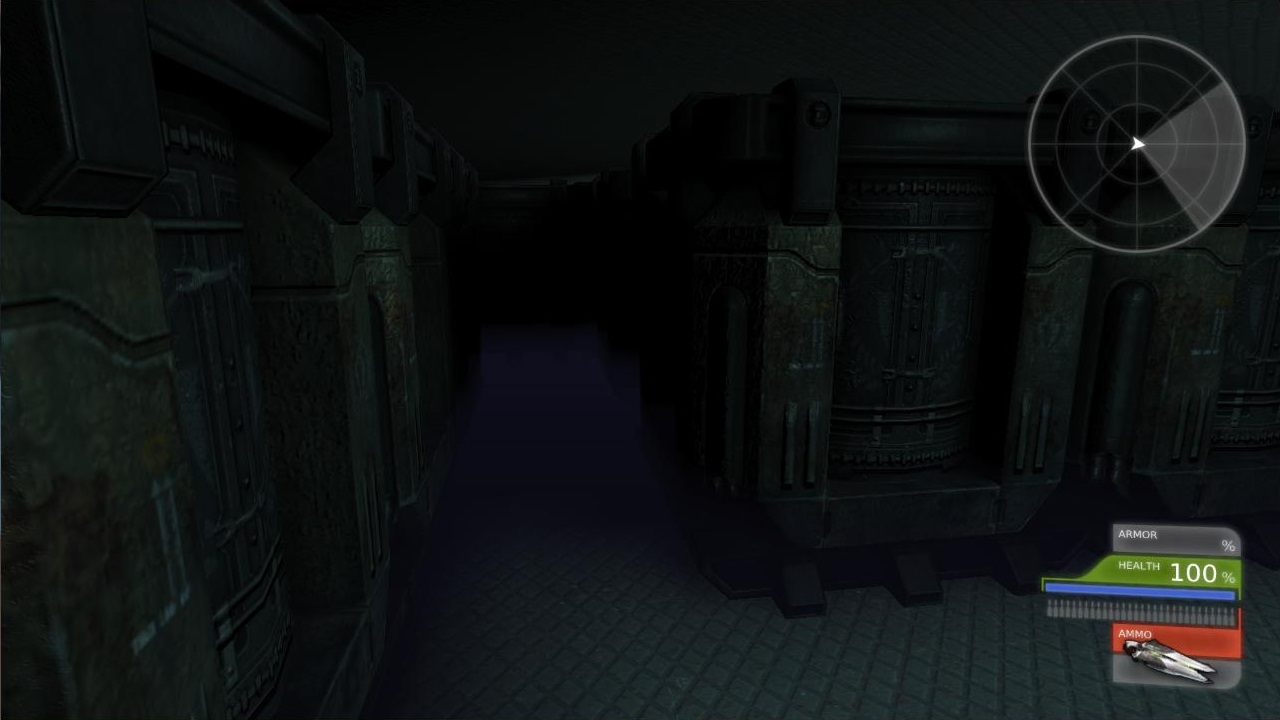‘Kingfisher’ coming along nicely

This is the third time I've written about the status of 'The Kingfisher.' It's recommended that you check up on the first and second articles before continuing in order to get the full story.
Andrew Smith has been hard at work since I last wrote about The Kingfisher. This third version showcases what are by far the biggest leaps forward that I've yet seen out of the locally-developed sci-fi horror project.
The new demo is immediately different; the player now begins the game inside what appears to be a dormant cryo-chamber. Trekking down the now-familiar halls of the Kingfisher vessel, I noticed that Smith has made alterations to the ambient music. It now adapts to the player's current situation, fluctuating in intensity as the player nears the big scare moment. The scare has also seen a noticeable alteration: the game now slows down immediately before the monster appears, conveying the feeling that the player is locked in place and not in control of the situation. Both of these changes afford more tension to the jump scare buildup, and to the scare itself.
However, the most noticeable additions come after what I had previously considered the "climax" of the demo. With this third version, Smith has fleshed out the player's goal, which has always been to collect three ship parts in order to repair the vessel and escape the Kingfisher. With this demo version, the three parts are now attainable, and are scattered around a few rooms throughout the Kingfisher. Two of the parts can be acquired through relatively straightforward means, but the third presents a more devious roadblock.

In order to access the ship part, players must navigate the Kingfisher's cargo hold. Looming, rectangular shipping containers litter the room, arranged in a maze-like pattern. The player must find his or her way through the labyrinth created by the containers while urgent music plays. In accompaniment, the room's busted electrical wiring means that the lights are going crazy during the entire ordeal, flickering on and off and forcing players to take every other step in near-total darkness.
I rounded each corner expecting to be confronted by a new atrocity. When I located the ship part in the back of the room, I was met with equal parts relief and wariness. The part is found lodged in a strange, organic-looking blob of flesh, which covers the entire back wall of the cargo hold. The origin of this substance remains unclear, though Andrew's bold ambitions for the game's narrative have me hopeful that its presence will be explained in a creative -- and likely unsettling -- way.
As it currently stands, collecting all three parts and returning them to the dock of the player's ship yields a simple "You Win!" message. Thankfully, Andrew assures me that he's put thought into the events that will transpire after this point in the final game. His ideas sound quite promising, and I look forward to seeing them play out as development on The Kingfisher continues.